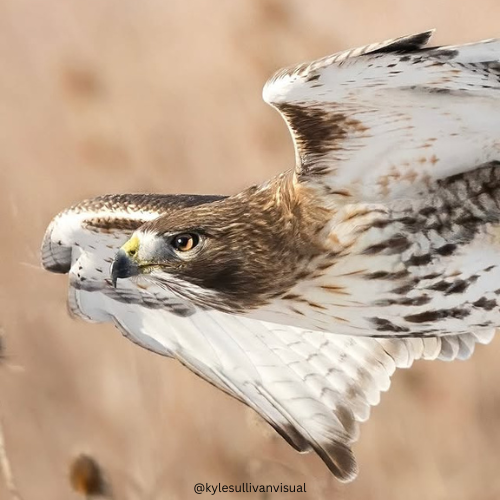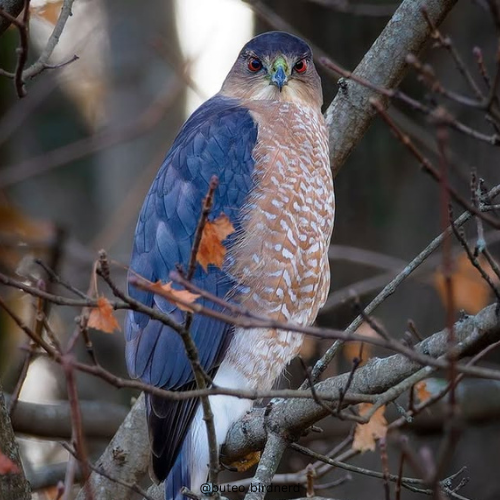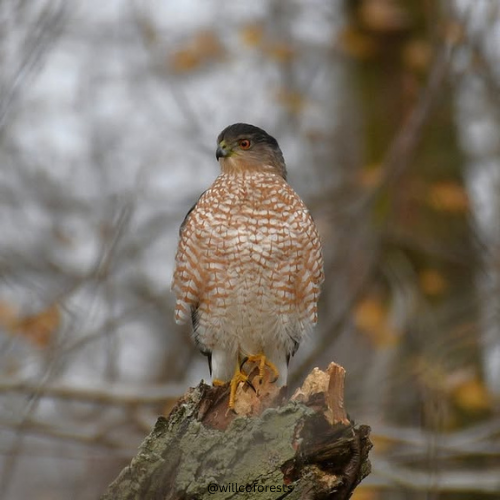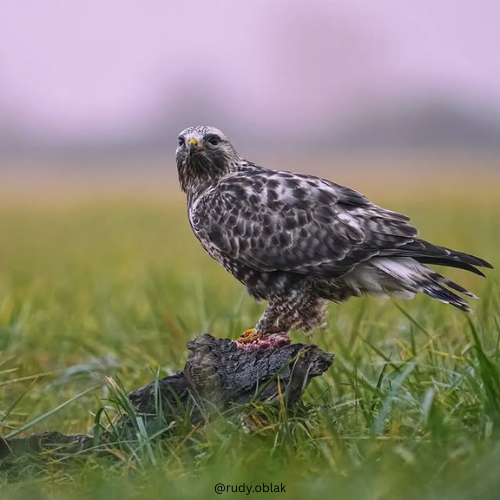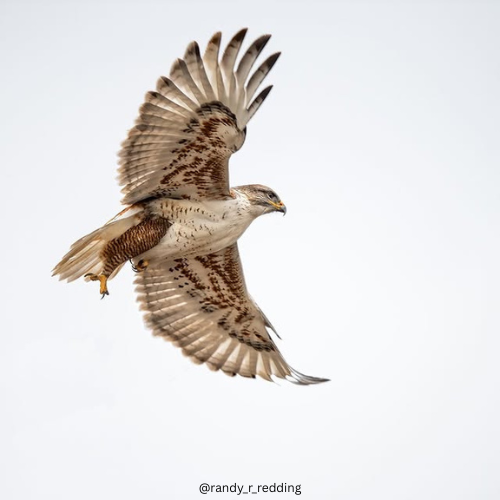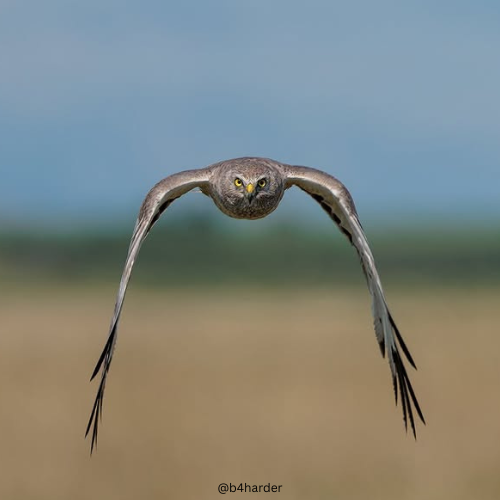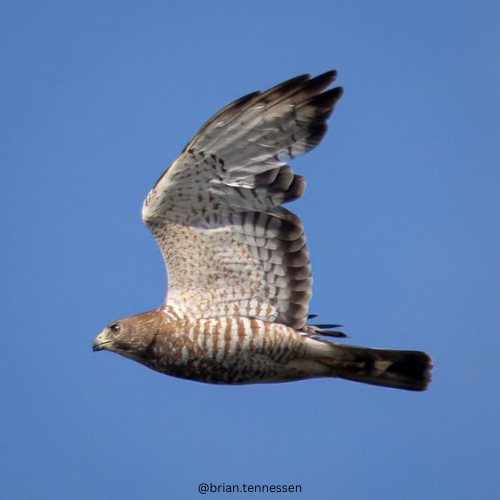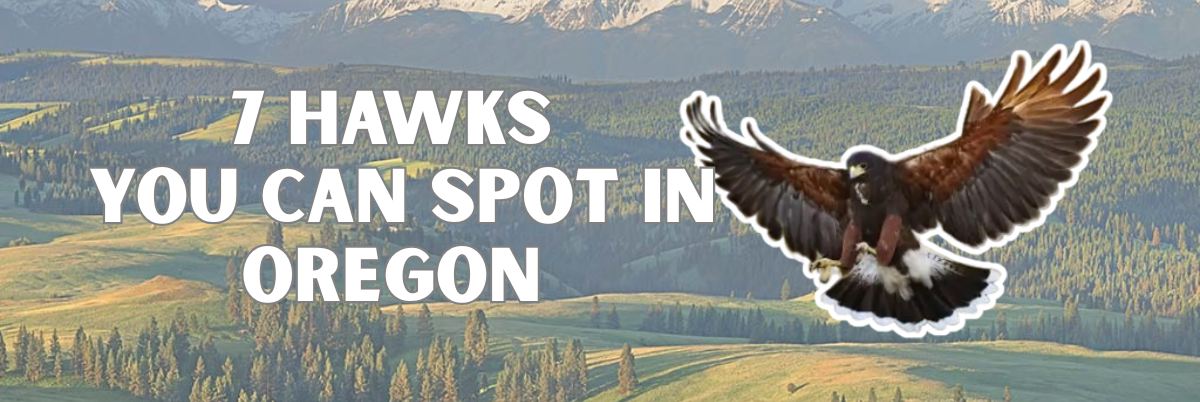
By Avian Feathers Team
Published July 2025
Oregon’s mix of forests, valleys, mountains, and coasts makes it an ideal place for hawk watching. Whether you’re hiking, driving through farmland, or relaxing in your backyard, keep your eyes on the skies, these raptors are all around.
1. Red-tailed Hawk
One of the most common hawks in Oregon. They’re large, with broad wings and a short red tail. You’ll see them perched on poles or gliding over open fields. They’re very adaptable and live in cities, forests, deserts, and farmlands.
Size
Length: 18–26 in (45–66 cm)
Wingspan: 43–56 in (110–142 cm)
Weight: 1.5–3.5 lbs (680–1600 g)
Scientific Name: Buteo jamaicensis
2. Cooper’s Hawk
Known for their fast flight and sharp hunting skills. Cooper’s Hawks often dart through trees chasing smaller birds. They’re common in forests and also show up in suburban neighborhoods.
Size
Length: 14–20 in (35–50 cm)
Wingspan: 24–35 in (62–90 cm)
Weight: 0.5–1.5 lbs (220–680 g)
Scientific Name: Accipiter cooperii
3. Sharp-shinned Hawk
The smallest hawk in Oregon. These swift raptors often appear near bird feeders, hoping to catch small birds by surprise. They’re tricky to spot because they move fast and blend into forested areas.
Size
Length: 9–13.5 in (23–34 cm)
Wingspan: 16.5–26.5 in (42–68 cm)
Weight: 3–8 oz (85–220 g)
Scientific Name: Accipiter striatus
4. Rough-legged Hawk
These hawks migrate to Oregon in winter from the Arctic. They have feathered legs all the way to their toes. You’ll usually see them hovering over open fields or perched on fence posts.
Size
Length: 18.5–20.5 in (47–52 cm)
Wingspan: 52–54 in (132–138 cm)
Weight: 1.6–3.0 lbs (725–1400 g)
Scientific Name: Buteo lagopus
5. Ferruginous Hawk
A rare and large hawk in Oregon. It prefers open grasslands and deserts. They have rusty-colored wings and a pale belly. These hawks are powerful hunters and mostly eat small mammals like rabbits and squirrels.
Size
Length: 22–27 in (56–69 cm)
Wingspan: 52–56 in (132–142 cm)
Weight: 2.0–4.5 lbs (900–2050 g)
Scientific Name: Buteo regalis
6. Northern Harrier
Easily recognized by their owl-like face and the white patch on their rump. These hawks fly low over marshes and fields, listening as well as watching for prey. They are often seen gliding in a V-shape.
Size
Length: 16–20 in (41–52 cm)
Wingspan: 38–48 in (97–122 cm)
Weight: 10–26 oz (290–740 g)
Scientific Name: Circus hudsonius
7. Broad-winged Hawk
These hawks pass through Oregon during migration. They are secretive and prefer forested areas. Their short tails and broad wings help them soar in large groups called “kettles.”
Size
Length: 13.5–17.5 in (34–44 cm)
Wingspan: 33 in (84 cm)
Weight: 16 oz (450 g)
Scientific Name: Buteo platypterus
Oregon’s diverse landscapes provide a crucial and rich habitat for an impressive array of hawk species, making the state a prime location for raptor enthusiasts. From the ubiquitous Red-tailed Hawk soaring over open fields to the agile Cooper’s Hawk darting through suburban trees, these eight species showcase the varied adaptations and hunting prowess of these magnificent birds. While some, like the Rough-legged Hawk, are seasonal visitors, others offer year-round opportunities for observation, highlighting Oregon’s vibrant avian biodiversity. Keep your eyes to the sky, as encountering any of these powerful raptors is a truly captivating experience in the Beaver State.
Where to Spot Hawks in Oregon
Oregon’s varied environments offer numerous opportunities to observe these fascinating hawk species:
Red-tailed Hawk: Extremely common and widespread across all of Oregon. Look for them perched on telephone poles, fence posts, or isolated trees along highways, or soaring over open fields, farmlands, deserts, and even urban parks.
Cooper’s Hawk: Frequently found in wooded areas, suburban neighborhoods, and parks. They are known for their agile flight and can often be seen darting through trees in pursuit of smaller birds, sometimes even visiting backyards with bird feeders.
Sharp-shinned Hawk: The smallest hawk, often found in dense forests and shrubby areas. They are quick and secretive, but can sometimes be spotted near backyard bird feeders during winter, hunting small birds.
Rough-legged Hawk: A winter visitor (October-April) from the Arctic. Look for them in open country, agricultural fields, grasslands, and high desert areas across Oregon. They often hover while hunting or perch on fence posts and low structures.
Ferruginous Hawk: A rare and large hawk primarily found in eastern Oregon’s open grasslands and sagebrush deserts. Look for them soaring or perched on isolated trees, but they require large, undisturbed areas.
Northern Harrier: Easily recognized by their low, gliding flight with wings in a “V” shape. They are common in marshes, wetlands, grasslands, and large open fields throughout Oregon, often seen at dawn or dusk.
Broad-winged Hawk: Primarily a migratory species in Oregon, most notably seen during fall migration (September) when they can form large “kettles.” They prefer forested areas, and sightings are more opportunistic as they pass through.
Have you spotted any of these hawks in Oregon?
Let us know which ones are your favorite.

